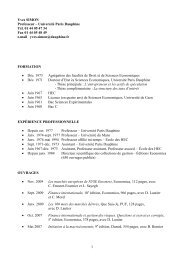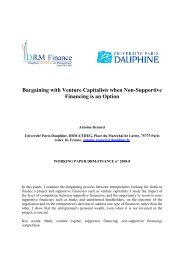Corporate governance and earnings management ... - CEREG
Corporate governance and earnings management ... - CEREG
Corporate governance and earnings management ... - CEREG
Create successful ePaper yourself
Turn your PDF publications into a flip-book with our unique Google optimized e-Paper software.
All the countries examined (with the exception of France concerning one phase – see later<br />
in section 3) went through an initial phase that can be classified as “static” by reference to<br />
idea that the balance sheet should be related to the “end” of the firm <strong>and</strong> then valued on the<br />
basis of liquidative value. This phase is marked by great reluctance to see goodwill as a true<br />
asset. In principle, this “embarrassing” asset was to be expensed immediately or at least<br />
rapidly. In the second phase (we call “weakened static”), goodwill was made to disappear<br />
within a short time of acquisition, but by means of a write-off against reserves. The third<br />
phase called “dynamic”, as it refers to the going concern (dynamic) assumption, saw<br />
widespread amortization of goodwill over a relatively long period. Finally, during the fourth<br />
phase called “actuarial”, goodwill came to be recognized as an asset, with no systematic<br />
reduction of value.<br />
Both individual accounts <strong>and</strong> consolidated are considered at the same time. A first reason<br />
for distinguishing the two kinds of accounting could be that goodwill in individual financial<br />
statements is not the result of a purchase of shares. But this argument is a formal one <strong>and</strong><br />
there is no substantial reason to make a special fate for single companies when they acquire<br />
unincorporated businesses (Davies, Paterson & Wilson, 1997, p. 247). The second reason is<br />
that the treatment of goodwill in consolidated financial statements could have an effect “more<br />
cosmetic than real because distributions are determined by the reserves of individual<br />
companies, not groups” (Davies, Paterson & Wilson, 1997, p. 238). But several studies<br />
conducted as well in the USA (Lintner, 1956; Abrutyn & Turner, 1990; Baker, Powell & Veit,<br />
2002) as in continental Europe (Pellens, Gassen & Richard, 2003; Busse von Colbe, 2004)<br />
seem to show that in fact, in big listed companies, the distribution of dividends is based on<br />
consolidated accounts: accounting for goodwill in consolidated financial statements is not<br />
merely a “show”!<br />
This study differs from previous literature on goodwill in three ways. Firstly, it takes an<br />
international, comparative approach, focusing as it does on four countries. Secondly, it spans<br />
5


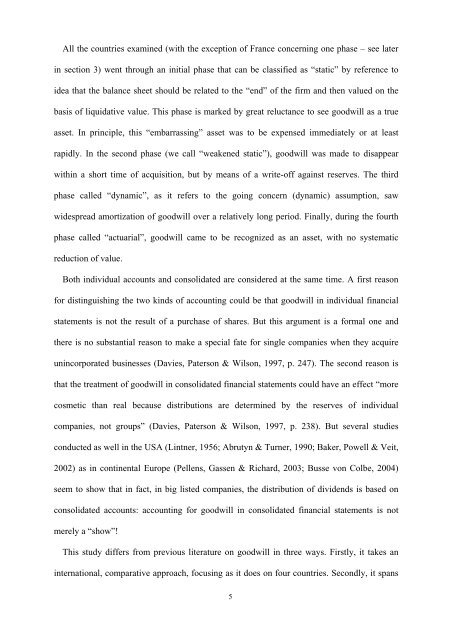
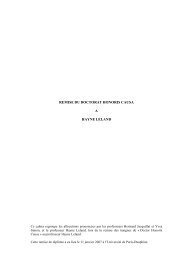

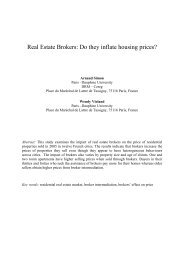
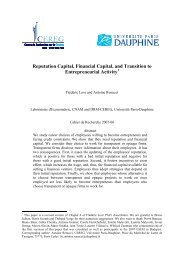

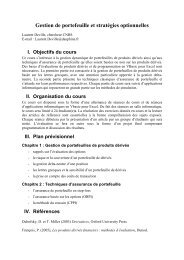



![& 6 ] ^ F ]^ - CEREG - Université Paris-Dauphine](https://img.yumpu.com/33326502/1/184x260/-6-f-cereg-universitac-paris-dauphine.jpg?quality=85)

